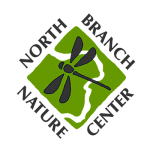Tuning into Sounds
Sounds through the Seasons
Listen to recordings of the soundscape from this exact spot at different times throughout the year.
Spring
How to Timberdoode
This place is home to the American Woodcock, a.k.a. the "Timberdoodle." This fun yet cryptic bird is best found by ear in the spring. Learn how to "timberdoodle" below.
Birdsong Apps
Abenaki Language
Alitôgwakil: "the way things sound."
Kita: listen
Panel Text - English
Listening through the Year
Depending on the season, you can hear Spring Peepers and Wood Frogs in the distance, birds like Timberdoodles and Tree Swallows in the field, insects buzzing, leaves rustling, geese honking, ice breaking up in the river, and more from this spot.
The sounds (alitôgwakil) of this landscape change over longer time periods too. We planted trees here that we think will thrive in Vermont’s warming climate. We don’t know yet what this field will sound like once it grows into a mature forest, but we hope these plantings will help this landscape stay resilient to climate change and filled with noisy birds and insects forever.
Alitôgwakil means "the way things sound" in Abenaki.
Deer Ears
Put on your Deer Ears by cupping your hands behind your ears and tune in to the sounds around you. Close your eyes if you feel comfortable. How many different sounds can you hear? Do you know what they are? Listen (kita) carefully and think about how these sounds relate to the time of day or year, or just enjoy the quietness if that’s what you notice. Then use the QR code to listen to recordings from this same spot at different times of day and year.
Panel Text - Spanish
Sintonizando con los Sonidos
Escuchando al Pasar el Año
Dependiendo de la estación, puedes escuchar Ranas Mironas y Ranas de Madera en la distancia, aves como los Garabatos de Madera y las Golondrinas de Árbol en el campo, el zumbido el los insectos, el susurro de las hojas, el sonido de los gansos, el hielo quebrándose en el río, y más de este punto.
Los sonidos (alitôgwakil) de este paisaje también cambian con el pasar del tiempo. Sembramos árboles aquí que creemos que prosperaran en el clima de Vermont que se va calentando. No sabemos aún cómo sonará este campo cuando se realice como un bosque maduro, pero esperamos que estos sembríos ayudarán al paisaje a mantenerse resistente al cambio climático y que estén llenos de aves y insectos bulliciosos para siempre.
Alitôgwakil significa “como suenan las cosas” en Abenaki.
Orejas de Venado
Ponte tus Orejas de Venado haciendo forma de tasa con tus manos y colocándolos detrás de tus orejas, y sintoniza con los sonidos a tu alrededor. Cierra los ojos si es cómodo. ¿Cuántos sonidos diferentes puedes escuchar? ¿Sabes cuales son? Escucha (kita) cuidadosamente y piensa sobre cómo se relacionan estos sonidos con la hora o la estación, o solo disfruta el silencio, por si acaso no hay sonido . Después, ocupa el código QR para escuchar las grabaciones desde este mismo punto durante diferentes horas del día y diferentes estaciones del año.
Panel Audio - English
Panel Audio - Spanish
(Translations by Onel Salazar)

713 Elm Street
Montpelier, Vermont 05602
(802) 229-6206
Hours: Center Open Monday-Friday 9-4
Trails Open 24/7


